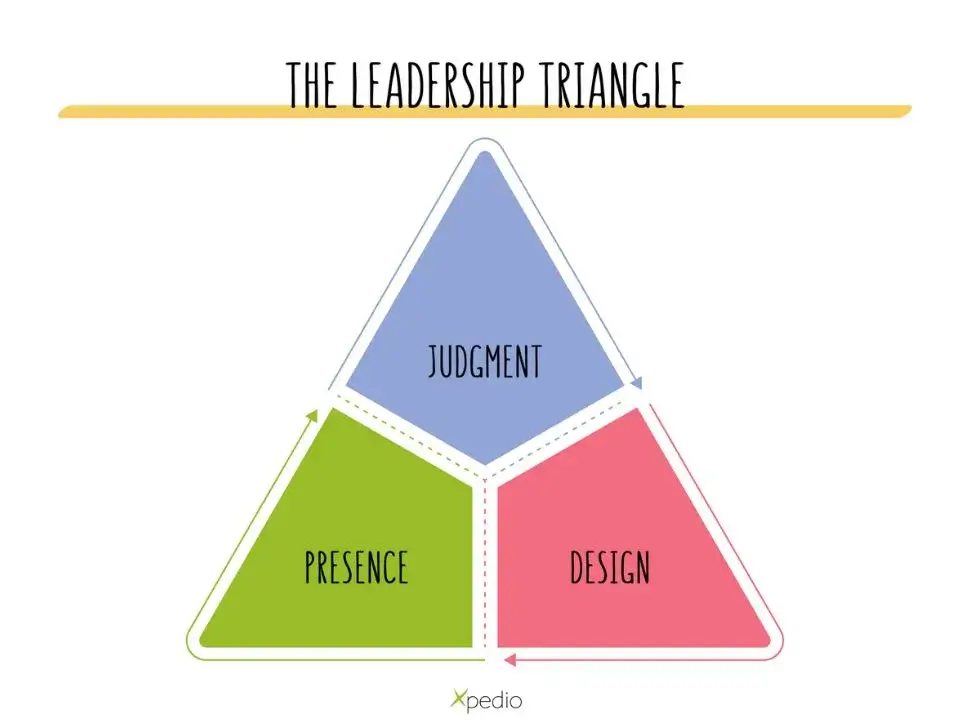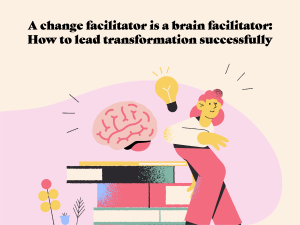Scroll to top
The Future of Leadership Training in the Age of AI
Leadership is changing. As artificial intelligence continues to reshape how work gets done, organizations are rethinking not only structures and roles, but the very nature of leadership itself. In many companies, the traditional middle manager is being phased out or redefined. In others, the question isn’t whether to retain the role, but how to reinvent it entirely.
At the same time, the demands placed on leaders are growing more complex. They are expected to drive performance, support well-being, interpret data, foster culture, manage hybrid teams, and now – navigate human-machine collaboration. It’s no wonder that many feel overwhelmed, and that leadership development as we know it is under pressure to evolve.
But where do we go from here?
A role in transition
For decades, managers were seen as supervisors: responsible for distributing tasks, monitoring performance, and maintaining order. That model was built for an era of predictability, hierarchy, and physical presence. Today’s world looks very different. Work is fluid, distributed, technology-augmented, and emotionally demanding. AI can now handle many of the administrative tasks that once defined managerial value.
This shift opens up an opportunity – not to eliminate leadership, but to reimagine it.
In our work at Xpedio, we increasingly see leaders not as controllers of work, but as cultural interfaces. Their role is to translate strategy into shared purpose, data into meaningful dialogue, and structure into environments where people feel they belong. They are not just decision-makers. They are sense-makers. Not only orchestrators of performance, but cultivators of connection.
And perhaps most importantly, they are stewards of judgment a quality that no algorithm can replicate.
From clarity to complexity: leading through paradox
Modern leadership is not about having all the answers. It’s about staying grounded when the answers are incomplete – or don’t yet exist.
Future-ready leaders must develop the capacity to hold paradoxes, not resolve them too quickly. They must be able to move fast while staying grounded in shared values. To challenge and care. To embrace AI as a tool while safeguarding human agency. To allow autonomy and still provide clarity.
We find that the most trusted and impactful leaders are those who can remain present in these tensions – who neither collapse into binary thinking nor drift into vagueness, but who help others navigate the space in between.
This is not a skill that comes from a single workshop. It’s cultivated over time, through experience, feedback, reflection – and the kind of support that recognizes leadership as a deeply human craft.
The leadership triangle: judgment, presence, and design
At Xpedio, we use a simple but powerful lens to frame the capabilities needed in this new leadership landscape. We call it the Leadership Triangle: Judgment, Presence, and Design.

- Judgment is the capacity to make wise decisions in uncertain conditions—balancing information with intuition, history with imagination.
- Presence is the ability to show up with clarity and courage in human interactions. It’s what allows a leader to hold space for conflict, feedback, emotion, and uncertainty.
- Design is the often overlooked skill of intentionally shaping the conditions for people to thrive: structures, rituals, communication flows, and hybrid environments that align with values and goals.
These are not just individual skills – they are relational, contextual, and teachable when development is embedded in real work.
From training to transformation
The challenge, then, is not only to update our leadership models, but to reimagine how we support leaders to grow. Traditional leadership development, often delivered through static modules or detached from daily reality falls short in this environment.
Future-fit leadership development must be:
- Embedded in practice: It happens not outside work, but within it – through feedback, experimentation, and reflection in live contexts.
- Supported by smart tools: AI can personalize learning, surface insights, and even coach in real time – but it must be in service of deeper human connection, not as a substitute for it.
- Relational by design: Peer learning, mentoring, and coaching remain essential. Leadership growth is accelerated by trust, conversation, and perspective – not just content.
- Tied to strategic change: Development isn’t just about the individual – it’s about enabling collective direction. The best programs are anchored in purpose and aligned with the organization’s evolving challenges.
In short: development is not an event. It’s a shared, ongoing act of transformation.
Leadership in the age of AI
What happens when leaders are no longer only managing people, but also managing human-machine systems? In many of the organizations we work with, leaders are now tasked with understanding how to redesign roles, workflows, and team dynamics in collaboration with AI.
This requires new capabilities—but also new mindsets.
Rather than fearing AI as a competitor or offloading responsibility to it, leaders must learn to work with technology: to discern what should be automated and what must remain deeply human. To know when to trust the data—and when to pause and ask a better question. To support their teams not only in performance, but in meaning-making amid change.
AI can amplify leadership. But only if leaders have the presence and judgment to guide its use wisely.
What this means for your organization
Every organization will find its own way through these shifts. But some questions are universal:
- Are your current leadership models aligned with how your work is actually changing?
- Are your managers equipped to lead through paradox and complexity – or are they stuck in outdated scripts?
- And perhaps most importantly: are you investing in leadership development as a form of cultural renewal, not just individual upskilling?
At Xpedio, we work with organizations that want to go beyond training, and instead create the conditions for leadership to evolve in step with their strategy, structures, and values. We help design leadership development that is lived, not layered on. Embedded, not bolted on. Human, not transactional.
If this is the kind of leadership your future needs, we’d love to talk.
About the author – Mirjami-Sipponen Damonte:
I’m a strategist, facilitator, and advisor helping organizations navigate complexity, lead with clarity, and design cultures that support both people and performance. Through Xpedio, I work internationally with leaders and teams who want to make change real, not just talk about it.
If this post sparked something for you or if your team is ready to reimagine how you lead, learn, or collaborate, I’d love to hear from you.
Let’s explore what your next chapter could look like.




